From the Golden Age of TV Anthologies: Boris Karloff’s Thriller, Season One
William Shatner in “The Grim Reaper,” in Season One of Boris Karloff’s Thriller (1961)
The late fifties/early sixties was THE golden age TV anthology genre series. Best remembered, still wildly popular and influential today is The Twilight Zone, of course, followed by Alfred Hitchcock Presents and The Outer Limits. There were others, including the interesting TZ precursor One Step Beyond, and a show hosted by one of the legends of classic horror cinema: Boris Karloff’s Thriller.
Like Outer Limits, Thriller had a short run — just two seasons. But TV production schedules were much different then. Those two seasons gifted us a whopping 67 episodes — equal to somewhere between six and TEN seasons now, in the streaming era. Sixty-seven hour-long episodes crammed into two nine-month production periods, each shot on a five-day schedule. It’s no surprise then that the episodes vary in quality, but the series contains some real gems — episodes that hold their own alongside the best Twilights Zones and B-movies of their era.
The first thing you might be interested to know is that despite the name, face, and introductory segments of Boris Karloff, the series was not originally conceived as a horror anthology — but a crime show. Karloff seems a strange choice for host then — unless the creators were especially enamored (as I am) of his unforgettable supporting performance as rival mob boss, Tom Gaffney, in Howard Hawks’ Scarface (1932). There he’s gunned down by Paul Muni, playing the eponymous character, while enjoying an evening out bowling with his cronies.
Richard Anderson in “The Purple Room” (Air date: October 25, 1960)
However, Thriller’s early ratings were poor. Things slightly improved thanks to one or two crime episodes which leaned toward the macabre, particularly the show’s seventh episode: “The Purple Room,” which was made for Halloween. Starring Rip Torn and Richard Anderson (of Six-Million Dollar Man and Bionic Woman fame) this is an “Old Dark House” -type mystery. It’s left up to the viewer to decide whether the supernatural is to blame for the main character’s terror — or his own tortured conscience.
It isn’t until midway through the first season, with episode eleven, that Thriller airs its first unambiguously supernatural story, I think. “The Cheaters,” based on the story of the same name by Robert Bloch, was adapted here by TV journeyman Donald S. Sanford. The story gives us a pair of glasses which allows (or perhaps “forces” is a better word) the wearer to see the truth about how others view them. Like the rifle in Winchester ’73 (1950), we follow the glasses through a series of unfortunate owners, including the great Jack Weston, always a pleasure to watch.
“The Cheaters” (Air Date: December 27, 1960)
Up until this point — and for a while after, until the change to horror fully takes hold — parts of season one of Thriller can be some hard going — especially if you’ve shown up for that sweet, sweet nightmarish terror. A smattering of the crime episodes are okay, but, other than the pilot episode starring Leslie Nielson, and another I’ll mention in a bit, they don’t come up to the level of an average Hitchcock episode.
At a certain point I just started skipping the episodes that featured children in big roles. While there are many fine kid actors today, back in the old days, performances by kids could be pretty cringe. For every Bill Mumy in TZ’s “It’s a Good Life,” there’s a hundred mannered, unconvincing child performances, where you can’t stop thinking about the misery-inducing stage parent just off camera intently watching their little cash cow and living their own fantasies of fame by proxy. (Maybe that qualifies as a prejudice on my part, but I’m standing by it.)
Patricia Michon as Yvette in “The Prisoner in the Mirror” (Air date: May 23, 1961)
A problem in some episodes is the hour-long format. Both Twilight Zone and Hitchcock‘s attempted hour-long seasons, and both those shows suffered in viewership — and artistically — for it. Too many of Thriller’s crime episodes drag, feel stretched out to fill time, and this would continue to affect the series even among all but the strongest horror episodes. Horror episodes, “The Prisoner in the Mirror,” and “Dark Legacy,” particularly, might have benefited from a half-hour format.
There’s one episode called “Trio for Terror” which is three unrelated stories, and I would have liked it if the series had tried more of those. Likely, budget restrictions and the need for more sets and larger casts for multi-story episodes made that prohibitive. Overall, most of the episodes feature small casts.
“Trio for Terror” (Air Date: March 14, 1961)
Another clunky device is the rigid format of the introductory segments written for Karloff. Early one’s demand he shoe-in the phrase “as sure as my name is Boris Karloff” somewhere and end with the line “this is a thriller” to remind the viewer what show they just tuned into, I guess. There are only so many ways to make some version of “And as sure as my name is Boris Karloff, this story is a thriller!” week after week. Thankfully, this is dropped for good by mid-season, and the intros are written more organically to set the mood of each story.
One of the better non-supernatural episodes comes very late in season one, “A Good Imagination.” This time, Robert Bloch adapts his own short story and it’s a great showcase for his wicked humor and sick imagination. It features an exuberantly malicious star-villain turn by character actor Edward Andrews (you may not know the name, but if you’ve seen movies you’ve seen his face). Andrews’ long career includes roles in Elmer Gantry (1960) where he played Sinclair Lewis’ other famous character, George Babbitt, to Sixteen Candles where he played Molly Ringwald’s grandpa, and finally 1984’s Gremlins). It’s the one crime episode of Thriller that DOES come up to the level of Alfred Hitchcock Presents.
Edward Andrews in “A Good Imagination” (Air Date: May 2, 1961)
The series, once it finds itself, is aesthetically compelling. Budgets are tight, but lighting and set design combine to make the best episodes visually striking. Jerry Goldsmith is brought on as a composer mid-season and scores many of the horror episodes, and his scores are gripping. I have the DVD complete set. One of the special features is the ability to play some episodes with only Goldsmith’s isolated music score over the visuals, turning them into haunting, little fever-dreams.
Many episodes of the show are easy to find online through a simple search, but the DVD box set, released in 2010, is generous with commentary tracks featuring a number of entertainment historians, surviving actors and directors, as well as horror writer/critic David J. Schow and contemporary film director/cinematographer Ernest Dickerson.
Natalie Schafer in “The Grim Reaper” (Air Date: June 13, 1961)
I’m not a collector of physical media, but during the pandemic I did pick up a few box sets of old TV series like this. I’ve certainly taken my time getting them. So far, I’ve only watched season one (with its mere 37 episodes). The season ends exceptionally strong with the finale, “The Grim Reaper.” Adapted teleplay by Robert Bloch, score by Jerry Goldsmith, a really excellent performance by Natalie Schafer (Mrs. Howell of Gilligan’s Island) and featuring a third act festooned with the scene-chewing acting style of William Shatner that we love him for. The best episodes of this series are very well shot (this one by Bud Thackery). They play like mini-movies.
But nearly as memorable is the penultimate episode, “Pigeons from Hell,” based on the classic horror story by Robert E. Howard. It might be the only adaptation of Howard’s work until Arnold shows up bare-chested in the eighties and it’s an excellent interpretation of the story. The DVD commentary by Gary Gerani discusses the difference between the script and the original story.
“Pigeons from Hell” (Air Date: June 6, 1961)
Commentators on other episodes also demonstrate a knowledge and respect for original source material, a touch which I, as a prose fiction writer myself, really valued.
I plan to continue working my way through my box of Thriller discs at a leisurely pace. Boris Karloff, himself, takes roles in several of these ( he only appeared in a single episode of the first season as a character) and I’m particularly looking forward to those. But, since the second season is a mere thirty episodes, I might find myself reaching the end all too soon.
Michael Canfield has published more than thirty short stories which have appeared in Vastarien, Alfred Hitchcock’s Mystery Magazine, The Mammoth Book of Kaiju, Black Gate, and other places.
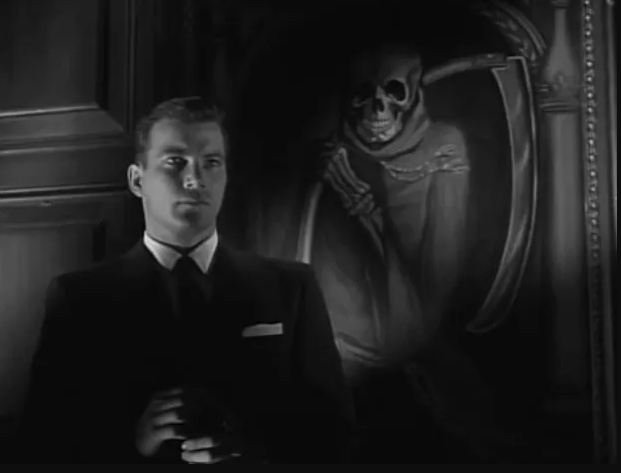
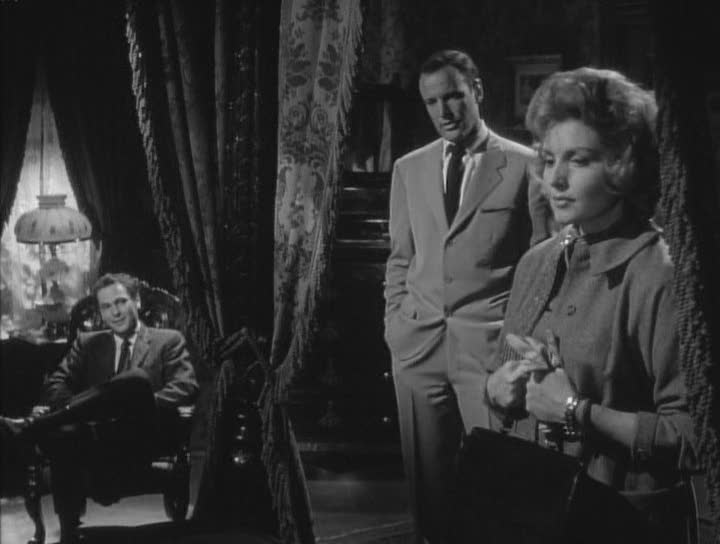
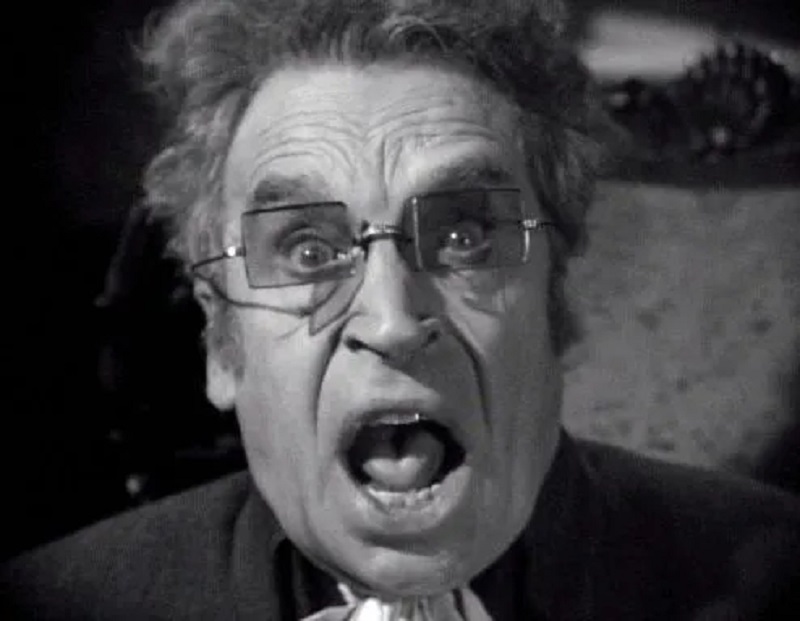
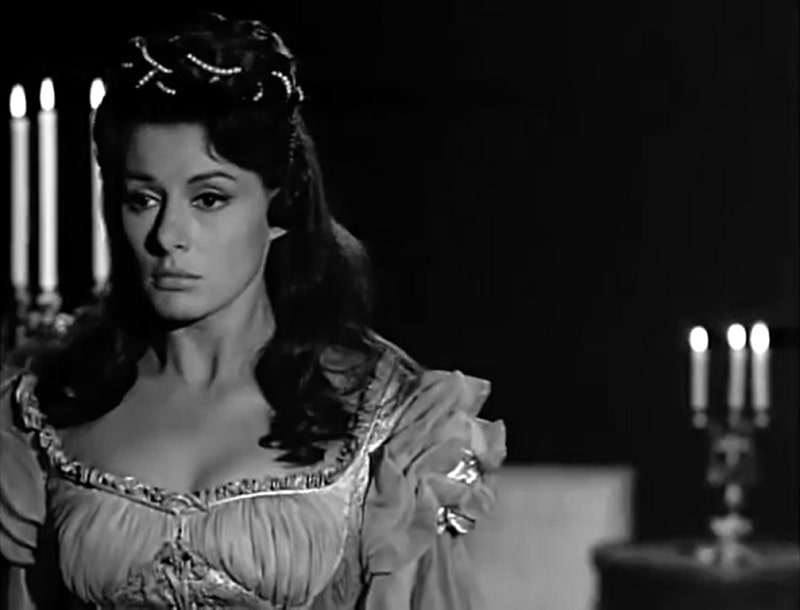
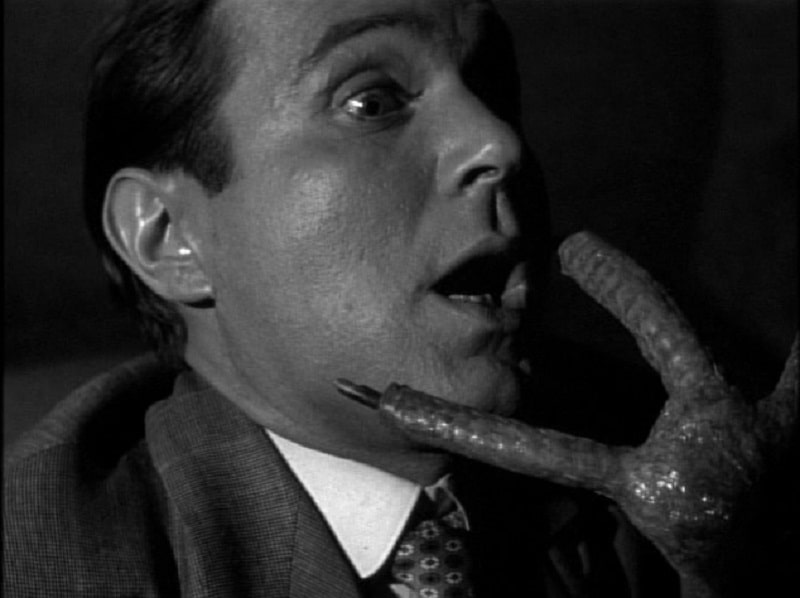
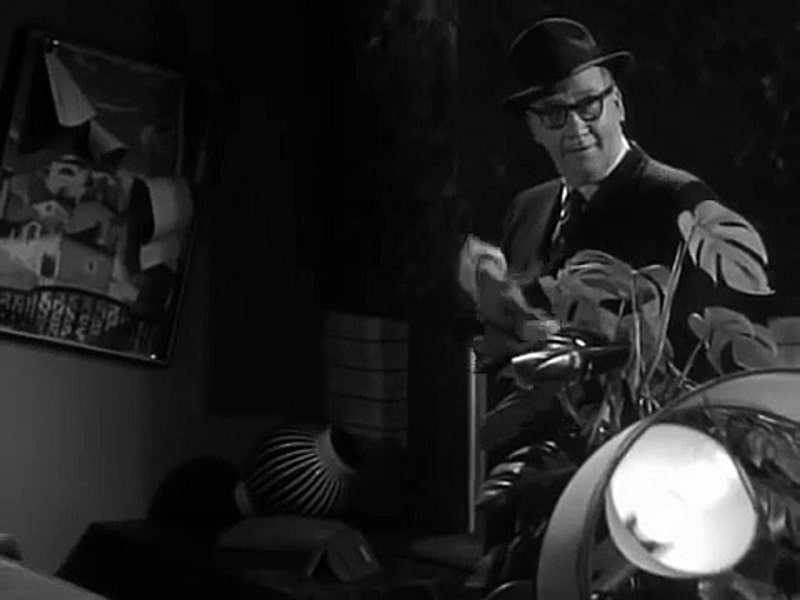
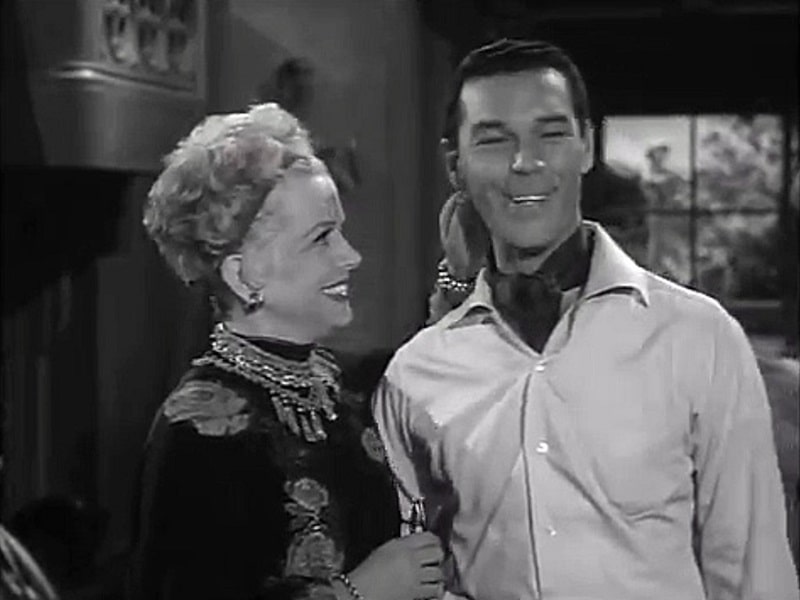
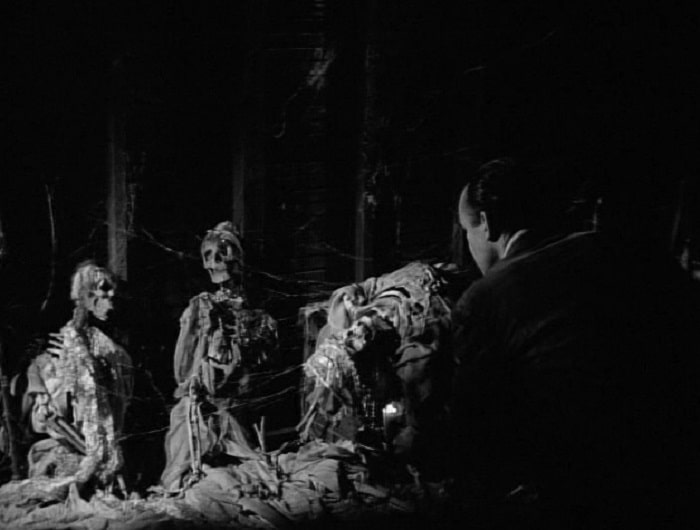
When this was finally released on DVD several years ago, I snapped the set up immediately and I’ve never been sorry.
The picture of Pamela Curran is not actually from Prisoner in the Mirror episode. It was from a movie entitled “The Loved One.” While I can’t attest to any of the other photos, I do know that this was not from the Thriller episode only because I am very familiar with the movie “The Loved One” as a relative of mine also starred in that film.
Thanks Marcia! I labeled the pictures, not Michael, and it was my fault for not checking my internet sources more carefully.
I replaced the image with one of Patricia Michon, which I have confirmed with IMDB. Thanks for letting us know about the mistake.
Nice to hear your relative had a role in “The Loved One.” Who was it??
Oh, and if you’re annoyed by the intros, where they feel obliged to tell you that Boris Karloff’s Thriller is hosted by…Boris Karloff, try a show that was on during the same era, The Adventures of Ozzie and Harriet, where every single week the announcer tells you that the part of Ozzie Nelson is played by Ozzie Nelson, that Harriet Nelson portrays Harriet Nelson, and their sons David and Ricky Nelson are played by David and Ricky Nelson. EVERY SINGLE WEEK.
(As a matter of fact, it’s quite a funny show, in a surprisingly sly way.)
Thank you for bringing up Boris Karloff’s Thriller, Mr. Canfield. I shall wait patiently for the discussion of Season 2, as the episode that always sticks with me is “A Wig for Miss Devore”, starring Patricia Barry, based on a story by August Derleth.